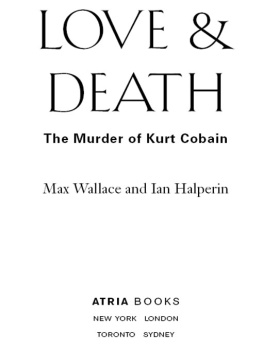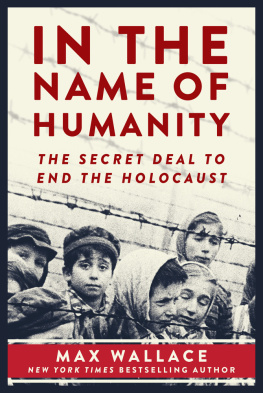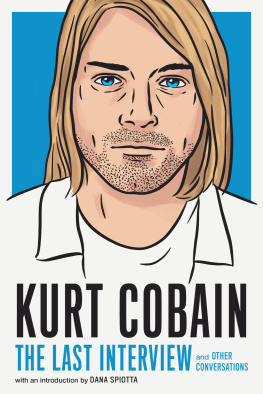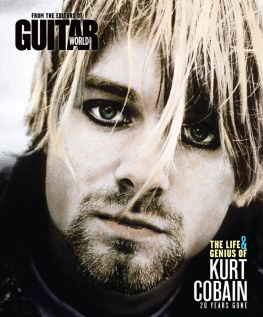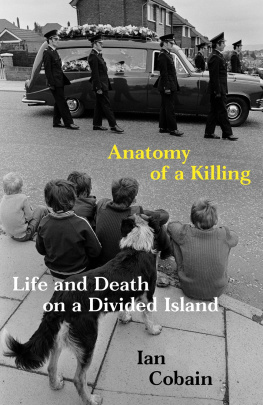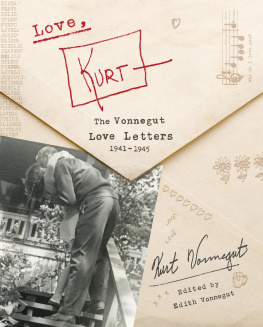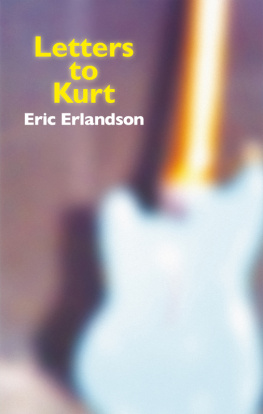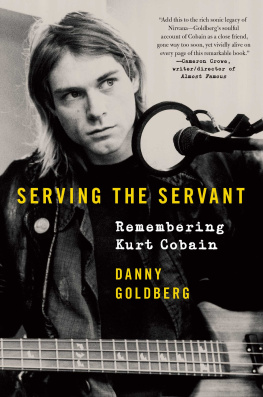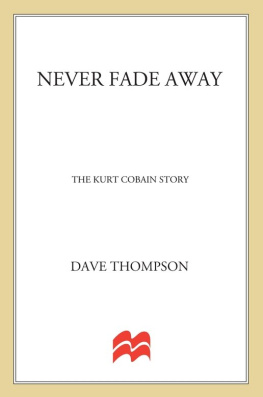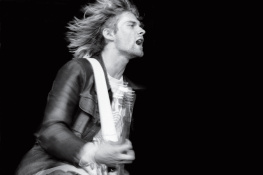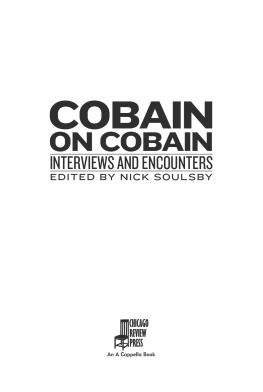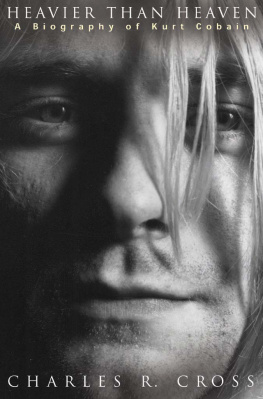Max Wallace - Love & Death: The Murder of Kurt Cobain
Here you can read online Max Wallace - Love & Death: The Murder of Kurt Cobain full text of the book (entire story) in english for free. Download pdf and epub, get meaning, cover and reviews about this ebook. year: 2004, publisher: Atria Books, genre: Non-fiction. Description of the work, (preface) as well as reviews are available. Best literature library LitArk.com created for fans of good reading and offers a wide selection of genres:
Romance novel
Science fiction
Adventure
Detective
Science
History
Home and family
Prose
Art
Politics
Computer
Non-fiction
Religion
Business
Children
Humor
Choose a favorite category and find really read worthwhile books. Enjoy immersion in the world of imagination, feel the emotions of the characters or learn something new for yourself, make an fascinating discovery.
- Book:Love & Death: The Murder of Kurt Cobain
- Author:
- Publisher:Atria Books
- Genre:
- Year:2004
- Rating:5 / 5
- Favourites:Add to favourites
- Your mark:
- 100
- 1
- 2
- 3
- 4
- 5
Love & Death: The Murder of Kurt Cobain: summary, description and annotation
We offer to read an annotation, description, summary or preface (depends on what the author of the book "Love & Death: The Murder of Kurt Cobain" wrote himself). If you haven't found the necessary information about the book — write in the comments, we will try to find it.
Max Wallace: author's other books
Who wrote Love & Death: The Murder of Kurt Cobain? Find out the surname, the name of the author of the book and a list of all author's works by series.
Love & Death: The Murder of Kurt Cobain — read online for free the complete book (whole text) full work
Below is the text of the book, divided by pages. System saving the place of the last page read, allows you to conveniently read the book "Love & Death: The Murder of Kurt Cobain" online for free, without having to search again every time where you left off. Put a bookmark, and you can go to the page where you finished reading at any time.
Font size:
Interval:
Bookmark:

1230 Avenue of the Americas
New York, NY 10020
Copyright 2004 by Ian Halperin and Max Wallace
All rights reserved, including the right to reproduce this book or portions thereof in any form whatsoever.
For information address Atria Books, 1230 Avenue of the Americas, New York, NY 10020
ISBN-13: 978-1-4165-0331-6
ISBN-10: 1-4165-0331-5
First Atria Books hardcover edition April 2004
ATRIA BOOKSis a trademark of Simon & Schuster, Inc.
Credits for the photo insert: page 1 (top) courtesy of Kris Parker; page 2 (bottom), page 4 (bottom), pages 7 and 8 courtesy of the authors; page 2 (top) courtesy of Sestini/Gamma; page 2 (bottom), page 3 courtesy of Tom Grant; page 4 (top) courtesy of Brian Garrity; pages 5 and 6 courtesy of Keystone Agency.
Visit us on the World Wide Web:
http://www.SimonSays.com
In memory of
KRISTEN PFAFF
W ithin days of the release of our first book, Who Killed Kurt Cobain?, in April 1998, the letters, calls, and e-mails began to pour in. Most of them demanded to know the same thing: Why hadnt we answered the question posed by the books title?
The seeds of our initial investigation had been planted in 1994, shortly after Cobains death, when Ian Halperin was on a West Coast tour with his band, State of Emergency. A former member of the band had moved to Seattle a year earlier and formed relationships with a number of people in Cobains circle, including one of Kurts drug dealers and his best friend, Dylan Carlson.
When Ian arrived in Seattle, his old bandmate introduced him to a number of Seattle scenesters, including friends of Kurt, each of whom related their doubts about the official story. Even then, soon after the apparent suicide, there was a feeling in Seattle that Kurts death may not have come at his own hand.
Ian, who had met Kurt in 1990, before a Nirvana gig in Montreal, didnt give much thought to the claims until he heard that a private detective hired by Courtney Love was claiming that Kurt had been murdered and that Courtney may have been involved. When he returned to Canada, Ian contacted his old writing partner, Max Wallace, who was then station manager of North Americas oldest alternative radio station, CKCU-FM, and had solid connections in alternative music circles. A decade earlier, we had shared a Rolling Stone magazine award for investigative journalism. We decided to embark on our own minor investigation into the circumstances of Cobains death, and came out with a somewhat skeptical treatment in the June 1995 issue of Canadian Disk magazine. On the strength of the article, we were commissioned to produce a video documentary about the murder theory, and a few months later, we traveled to Seattle and California to investigate the case.
But while we were conducting our own probe, the murder theory was taking on an unstoppable momentum of its own. Courtney Loves private detective, Tom Grant, had gone public with his murder theory in numerous national and international media forums, including a major U.S. network television show. Before long, our documentary had turned into a hastily assembled book, published on the fourth anniversary of Kurts death.
Instead of taking a stand on Grants charges, our book examined the facts on both sides and in the end simply called on police to reopen the investigation. Some reviewers mocked the conspiracy theory at the core of our book, but most praised its objectivity. The New Yorker issued us an imprimatur of credibility when it labeled the book a judicious presentation of explosive material. Some readers, however, seemed to believe we had been a little too judicious.
Among the myriad of letters we received following the books release were a number from forensic and law enforcement specialists who told us that we had missed the boat; the details we reported clearly demonstrated that Kurt Cobain had been murdered. But by then, the case was over for us. Max wrote two more books on unrelated subjects, appeared as a guest columnist for the Sunday New York Times, and produced two documentary films. Ian wrote three books, was hired as a correspondent for Court TV, and embarked on an acting career that landed him a role as Howard Hughess friend in Martin Scorceses upcoming film The Aviator.
Meanwhile, another high-profile case was making its way back into the headlines. A month after the publication of Who Killed Kurt Cobain?, former LAPD detective Mark Fuhrman published Murder in Greenwich exploring the 1975 murder of fifteen-year-old Martha Moxleya book that regularly jockeyed for first place with ours on Ingrams True Crime bestseller list. Fuhrman had pointed to Kennedy cousin Michael Skakel as the likely killer and, when the case was reopened after twenty-seven years, Murder in Greenwich was credited. On June 7, 2002, Skakel was convicted of the crime.
For Fuhrman, a crucial piece of new evidence had surfaced two decades after Martha Moxleys death. Nearly a decade after Kurt Cobains, we came into some damning new evidence of our own.
I t is a typically rainy day in Montesano, Washington, when we arrive for our interview with Kurts paternal grandfather, Leland Cobain, in June 2003. Leland and his late wife, Iris, were said to have been closer to Kurt than even his own parents, and there were reports that, shortly before his death, Kurt had made plans to go on a fishing trip with his grandfather. Although we had contacted him while we were researching our first book, Lelandlike most of Kurts immediate familywas reluctant to be interviewed. Now, more than nine years after Kurts death, we had heard that Leland was finally ready to talk about his famous grandson.
Most biographical accounts of Kurts early years describe his family living in a trailer park, conjuring up images of a trailer trash upbringing. Indeed, the small Montesano lot where Leland resides, and where Kurt had lived on and off during his youth, is officially given this designation in the town directory, and perhaps it once served this purpose. But when we arrive, we are surprised to find that the dwellings arent trailers at all, but rather small, prefab, bungalow-style units with well-groomed lawns and beautiful trees. Boats and golf carts are parked in many of the driveways, suggesting a more affluent community than what we had been led to expect by the condescending biographies and press accounts.
Leland greets us warmly at the door of his slightly cramped two-bedroom house. He and Iris had moved in more than thirty years earlier, when Kurt was just a young child, and Leland had continued living here alone after Iriss death in 1997. Just a stones throw away is the house where Kurt himself had lived briefly with his father after his parents divorce. When the going got rough, however, it was his grandparents house where he sought refuge. It wouldnt be entirely accurate to describe the house as a shrine to Kurt, but from the moment we walk in the door, his presence can be seen and felt everywhere. The first sight that catches ones eye is a framed gold record presented to Nirvana in 1993. Underneath it is a kitschy black velvet portrait of Kurt given to Leland a few years ago by a fan. The rest of the walls and bookshelves are crammed with photos of Kurt and the other grandchildren, sandwiched in between plaques and trophies commemorating Lelands achievements as a champion golfer and dartsman. More Kurt-related memorabilia is crammed in the basement, including hundreds of photos and letters sent to Leland and Iris by Nirvana fans from all over the world.
Im very proud of him, says Leland, tearing up slightly as he pauses in front of a photo of a cherubic three-year-old Kurt. He was a good kid. I miss him. He takes us on a tour of the house, pointing out the many artifacts associated with his grandson and telling stories about the boy who had spent a lot of time within these walls. Leland is a spry seventy-nine-year-old, who wears hearing aids in both ears to remedy a deafness acquired while fighting at Guadalcanal as a young marine during the Second World War and then exacerbated by rolling asphalt for a living years later. After his discharge from the marines, he developed a serious alcohol problem, which he admits made him a different person. By most accounts, his problems started after his fathera local county sheriffwas killed when his gun went off accidentally. However, his heaviest drinking reportedly started after his third son, a severely retarded boy named Michael, died in an institution at the age of six. Leland, though, soon conquered his personal demons, found religion and gave up alcohol completely. I became a changed man, he recalls. By the time Kurt was born in 1967, he had become a respected citizen of Montesano, a regular churchgoer and, by most accounts, a pretty good father and grandfather, frequently babysitting for Kurt and his younger sister, Kim. But it was Iris, not Leland, with whom Kurt most closely bonded.
Font size:
Interval:
Bookmark:
Similar books «Love & Death: The Murder of Kurt Cobain»
Look at similar books to Love & Death: The Murder of Kurt Cobain. We have selected literature similar in name and meaning in the hope of providing readers with more options to find new, interesting, not yet read works.
Discussion, reviews of the book Love & Death: The Murder of Kurt Cobain and just readers' own opinions. Leave your comments, write what you think about the work, its meaning or the main characters. Specify what exactly you liked and what you didn't like, and why you think so.

